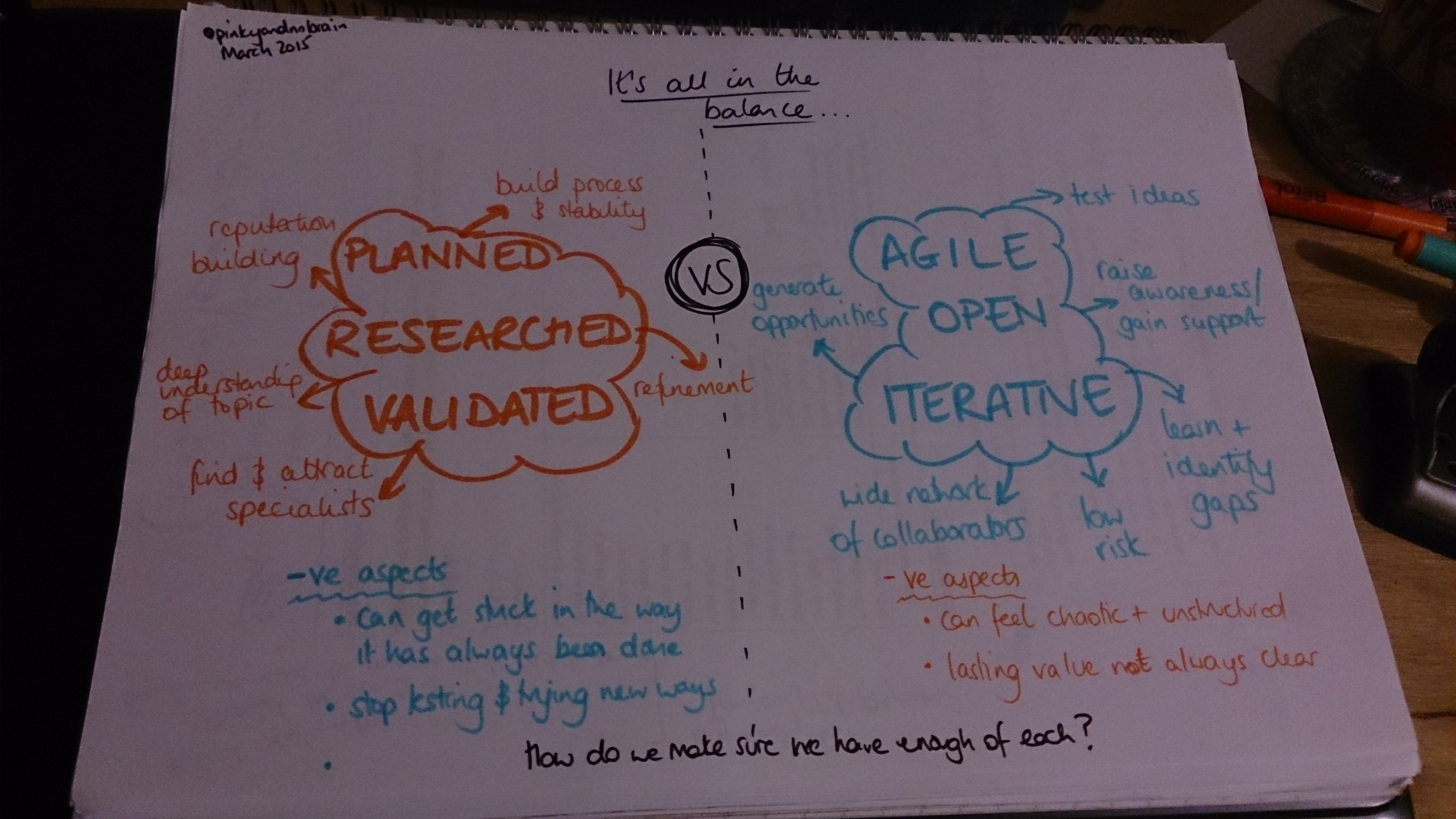Having worked in Higher Education for a number of years, at a research driven Russell group university no less, I never thought I’d see the day that educational design and agility went hand in hand. I was thrilled to see a fantastic example of it at the recent talk by Sheila McNeill as part of the Sussex TEL seminar series. You can view a video of the session, where Sheila talks through her case study of designing an event-based digital learning resource in the space of just 4 weeks last summer.
My experience of any kind of curriculum or course development is of a slow, research intensive and business case heavy process. I have attended my fair share of curriculum and quality assurance committees for BSc and MSc level teaching. Naturally then, my instinct is to apply this experience to any kind of course design and, being a project manager, to start to recoil at the timelines and risks involved with digital course design for higher education. My time as a digital consultant within the corporate sector taught me to value agility and a short, sharp “try it and iterate” approach. The two are often at odds. The prospect of being creative often inspires fear that there will be no control over the outcome, which can be a problem when you come up against industry standards and regulations (e.g. academic quality assurance, in this case).
As I listened to Sheila’s talk, I was busy in an internal argument. Part of me was cheering on an agile, iterative, pilot based approach that raised awareness and demonstrated actual evidence of doing something new and creating results that are worth celebrating. Another part of me was questioning the wider applicability of the findings and spotting all the clashes with traditional HE course design. I was caught up in my own fears of the consequences of allowing more space for creativity.
It’s all in the balance!
As we look for ways to incorporate agile and responsive practices into our work lives, I frequently wonder how we can determine the optimal balance between the agile, open, constantly iterative approach and the more heavily planned, more deeply researched approach that may produce a more highly validated output. This doesn’t only apply in HE either, it applies everywhere.
In my professional life I’ve encountered both as being important and my instinct is always to look at the two poles and figure out how to get the best from each. I’ve summarised my thoughts on what approach works best for in the diagram above and I’ve like to know in which situations other people gravitate toward one or the other. Where are the points when you are working within one mindset and you suddenly find the exact opposite is demanded of you by colleagues / management / clients ?
My instinctive approach is: yes, be agile, be open and test out different approaches. But temper it with process design and development as you go and stick to specific themes around which you innovate and have core principles that are set, rather than leaving yourself free to wander in any direction any time. Constraints are really important for sparking innovation and creativity.
Let me know in the comments below how this plays out in your work life, I’m interested to hear other perspectives on it.

